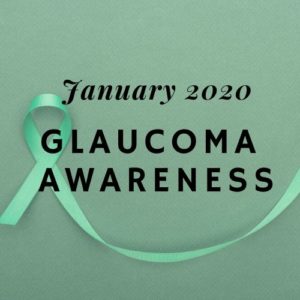Glaucoma Awareness Month


Glaucoma is a group of disorders that damage the optic nerve. The damage is often caused by abnormally high pressure in the eye. Because many types of glaucoma are gradual the condition is often not noticed until it has advanced and some vision is lost.
Vision lost to glaucoma can’t be recovered and that’s why it is important to have regular eye exams that included pressure measurements of your eyes so that glaucoma can be detected and treated before it has caused any vision loss.
The good news is that when glaucoma is diagnosed early and treated, vision loss can be slowed or prevented.
Risk Factors
Those at a higher risk of developing glaucoma include people of African, Asian, and Hispanic descent, people over age 60, those with family members already diagnosed with glaucoma, people with diabetes, and people who are severely nearsighted.
Prevention
Get regular dilated eye examinations. Regular comprehensive eye exams can detect glaucoma in the early stages and appropriate treatment can be started. The American Academy of Ophthalmology recommends having a comprehensive eye exam every 5-to-10 years for people under 40 years old; every 2-to-4 years for people 40 to 54 years old; every 1-to-3 years for people 55 to 64 years old; and every 1-to-2 years for people older than 65. If you are in a high risk category, it is wise to have yearly comprehensive eye examinations.
Wear eye protection. Serious eye injuries can lead to glaucoma so it’s wise to wear eye protection when using power tools or playing high-speed racket sports in enclosed courts.
Exercise regularly. Exercise may help prevent glaucoma by reducing eye pressure. Talk with your doctor about an exercise program that is safe for you.
Treatment Options
Several classes of eye drops are used to treat glaucoma. Some increase the outflow of the fluid in the eye and others reduce the production of fluid in the eye, but they all are designed to reduce eye pressure. If eye drops don’t reduce eye pressure to the desired level, oral medication can be prescribed and used along with the eye drops.
There are also surgical treatments that improve the drainage of fluid in the eye and lower eye pressure. They include LASER surgery, filtering surgery, and the insertion of drainage tubes


